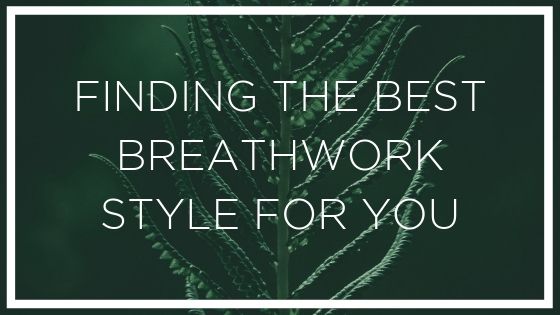The breath is the bridge between our mind and our body. If we are willing to follow it, it takes us from the conscious into the subconscious inner realms. Although unconscious breathing is the natural state, at any time we can take control and alter our breathing through conscious choice. Research shows that how we breathe impacts the release of chemicals in our brain and can synchronise or desynchronise the hemispheres of our brain. Through breath, we can attain clarity and efficient energy, or we can experience negative experiences of brain fog, sluggishness, or too much energy.
Mystics and teachers of many ancient cultures have long taught the power of breath training. That each emotional experience has a correlated breathing pattern, and that if we change our breathing we change our emotions. They also taught breathing techniques to enter into altered states of consciousness, allowing us to better understand ourselves and the universe.
My research has led me to discover four distinct types of breath training. These are:
- Balancing
- Energising
- Relaxing
- Emotional Release
Which of these to use is largely personal and contextual. Someone who is highly stressed and overworked will likely benefit from relaxation techniques. While another person who is suffering depression and lethargy will gain more from energising techniques.
I have outlined below each of the types with a style popular today and followed it with a technique you can practice right now to have the first-hand experience. If you feel that you are interested in any of the styles, I recommend you seek out a trained practitioner who can teach you safely, and guide you.
Balancing with Pranayama
Pranayama is the yogic practice of energy control through breathing. We see prana (energy) to be linked with breath. Through training the breath to be strong, subtle, short or stretched we learn to similarly alter our energy, learning the ability to send the breath to focused areas of our body.
Yoga speaks of energy channels through the body, the three most important being ida, pingala and sushumna. The sushumna nadi travels from the base of the spine to the crown of the head and is the main energy highway of the body. Ida and Pingala start on either side at the base of the spine and cross over the spine at each energy centre on the way up. These two energy paths are contrasting energies, yin/yang, masculine/feminine, solar/lunar.
Ida channel is related to the parasympathetic nervous system, our resting state. Pingala is concerned with the sympathetic nervous system, or our alert consciousness. These two must be balanced to achieve the steadiness of mind or alert relaxation that meditation requires. This will allow a smooth flow of energy up the sushumna, or central nervous system.
Nadi shodhana or alternate nostril breathing is a powerful technique to bring these two energies into alignment. Nadi being the energy channel, shodhana meaning purification.
Technique:
- Sit in a comfortable seated position. Lengthening through the spine and taking deep relaxed breaths
- Take the right index and middle finger and press gently in the centre of the forehead over the third eye
- Pressing shut the right nostril with the thumb, inhale deeply through the left nostril. Pause briefly at the full inhale.
- Close the left nostril with the ring finger and exhale through the right nostril. Pause briefly at the full exhale.
- Repeat now through the other side.
- Do 10 full rounds
Energising with Wim Hof
The Wim Hof Method (WHM) was the first breathing technique I was really introduced to five years ago. While other techniques have maybe more subtle effects not immediately visible. The WHM took me directly to physiological experiences of bliss, bright lights, electrical and tingling sensations. I could no longer deny that breath had an immediate and profound effect on my state of consciousness.
Not only this, but it had direct physical performance enhancement. I still have all my notes on how many pushups I could do pre and post WHM. Wim Hof’s own life is no doubt testament to the benefits, being the holder of 26 World Records. Many of these benefits are likely due to the high level of oxygenation provided by the technique, stimulating the electrochemical process of the cells in the body.
Further down the track, the practitioner may even come to control functions of the autonomic nervous system. These include heart rate, immune function and metabolism.
For the following technique, a stopwatch timer is recommended if you are interested in seeing how long you are capable of holding your breath.
Technique:
- Come into a comfortable seated or lying position, relaxing the body while maintaining a straight spine
- Take 30 deep, fast breaths. Inhaling through the nose, exhaling through the mouth
- On the 30th breath inhale fully, and then exhale deeply.
- Hold. Optional: Start a timer
- Inhale fully when you become uncomfortable. (Stop timer)
- Hold the breath in for 15 seconds.
- Repeat 5 times
Relaxing into Apnea
Diving underwater to depth puts immense stress on the body. From the physical stress of held breath in the lungs and pressure. To mental stress of panic, fear and doubt. All these stressors inhibit our ability to hold our breath for extended periods which is why free divers have mastered the ability to consciously relax both body and mind.
The key to good free diving is your ability to relax. Relaxation of body, relaxation of mind, and relaxation of breath.
Through the use of visualisation techniques, body scans and more, any person is able to learn how to hold their breath 3+ minutes. These skills have direct crossover to being able to remain calm in high-stress situations in everyday life or to be comfortable in discomfort. If you find yourself frequently overreacting, or feel like you have a short fuse, this training can help you find calm in high-stress situations.
When practicing this technique it is important to understand that the urge to breathe, comes from both instinct and a buildup of CO2. It can be felt as burning at the back of the throat, or convulsions in the diaphragm. It is this discomfort that you must relax into and go beyond.
Note: It is important not to do any breath training in or around water without supervision. The technique below should be practiced on dry land.
Technique:
- Come into a relaxed supine or semi-reclined position. Begin by relaxing your body, and breathing normally. Calm your mind and just watch your breath naturally.
- Continue this breathing until you feel yourself in a very relaxed state as if you were trying to fall asleep.
- Now, take a deep inhale. Exhale fully all the air out of your lungs. Take one 100% full deep breath.
- Hold.
- You should be stopping the air escaping your lungs with the glottis, at the back of your throat.
- Scan the body for any muscles that are tense. Hands, legs, forehead, jaw, shoulders, neck. It is important to relax every muscle.
- Relax your mind and soften your body.
- Continue to hold as long as possible, without letting any air out.
- When you exhale, focus now on deep inhalations to re-oxygenate the lungs.
- Repeat 3 times
Emotional Release through Shamanic Breathwork
Shamanic breathwork has been used for centuries as a natural method to enter into altered states of consciousness. These altered states allow us to go deeper into ourselves to resolve past traumas, dissolve energy blockages, find clarity and purpose, and more.
A popular modern form is Holotropic Breathwork developed by Stanislav Grof. Who developed his framework after his LSD based therapy became illegal in the 1960s. He found that through altering the breathing pattern he could elicit similar effects to that of LSD. Holotropic coming from the Greek words holos and trepein, meaning moving toward wholeness.
Shamanic breathwork practices generally have different experiences for each person. Some people may not experience much at all, while others report experiences of emotional release, rebirth, past life vision and astral travel.
The practice generally involves breathing at a fast rate for extended periods of up to 3 hours. While music plays to guide the individual’s journey, the vibrations and rhythms of different instruments creating different effects within the emotional body.
This breathwork style, as its name implies is best done with a trained practitioner. They will help provide a sacred space, support and guidance to fully integrate the experience.
Summary
I hope this outline has provided you with new knowledge on the different modalities within breathwork. And inspired you to pursue teaching that may help with balance, energy, relaxation, or emotional release.
Breath training need not be so elaborate though, sometimes the best practice can be just taking 5 minutes each day to slow down, breathe rhythmically and enjoy the sensation of being alive.
The mind is the king of the senses, but the breath is the king of the mind. – Hatha Yoga Pradipika

Hi, I am Matt. I am a passionate student of health and wellness. The science of yoga is the most effective system I’ve yet found for bringing about physical vitality with mental clarity. By blending a Western approach of anatomy and alignment, with Eastern philosophies and meditative techniques. My mission is to share these modern and ancient teachings to help others find harmony in their life.
